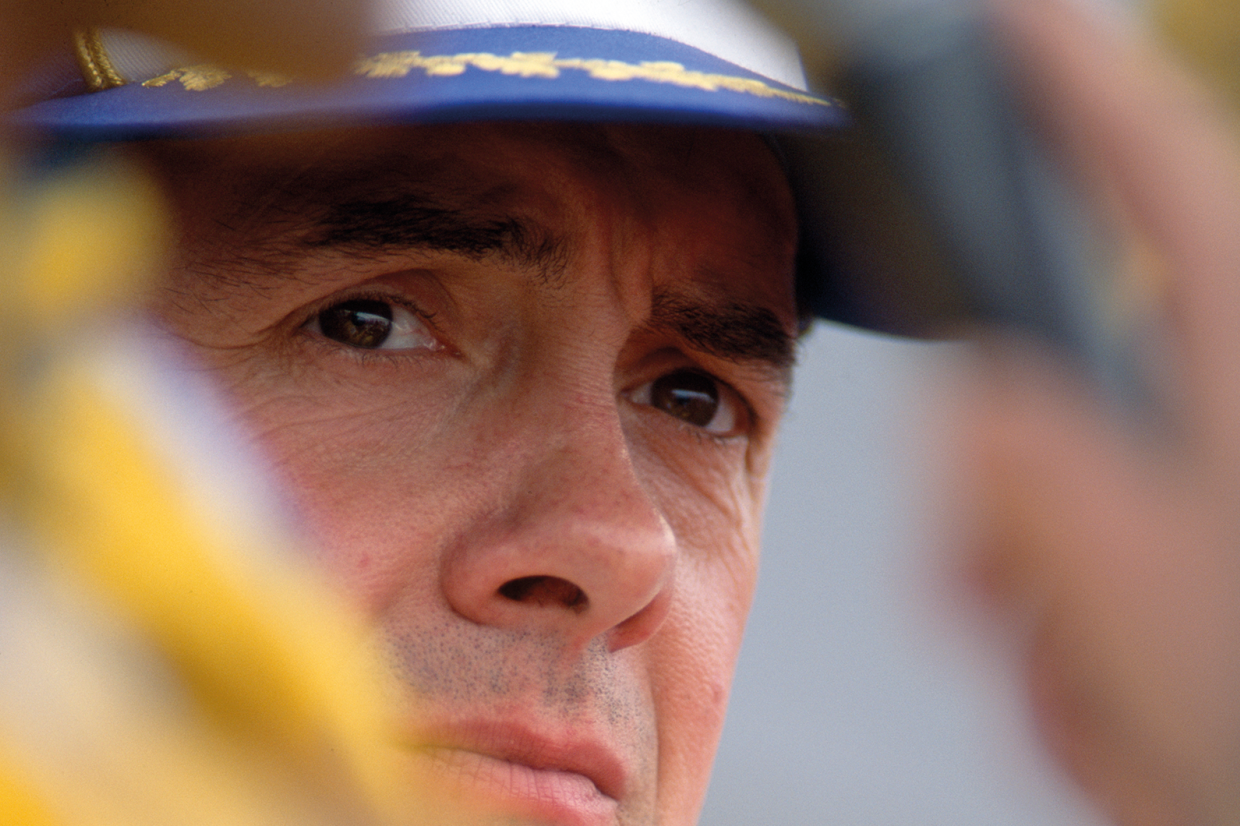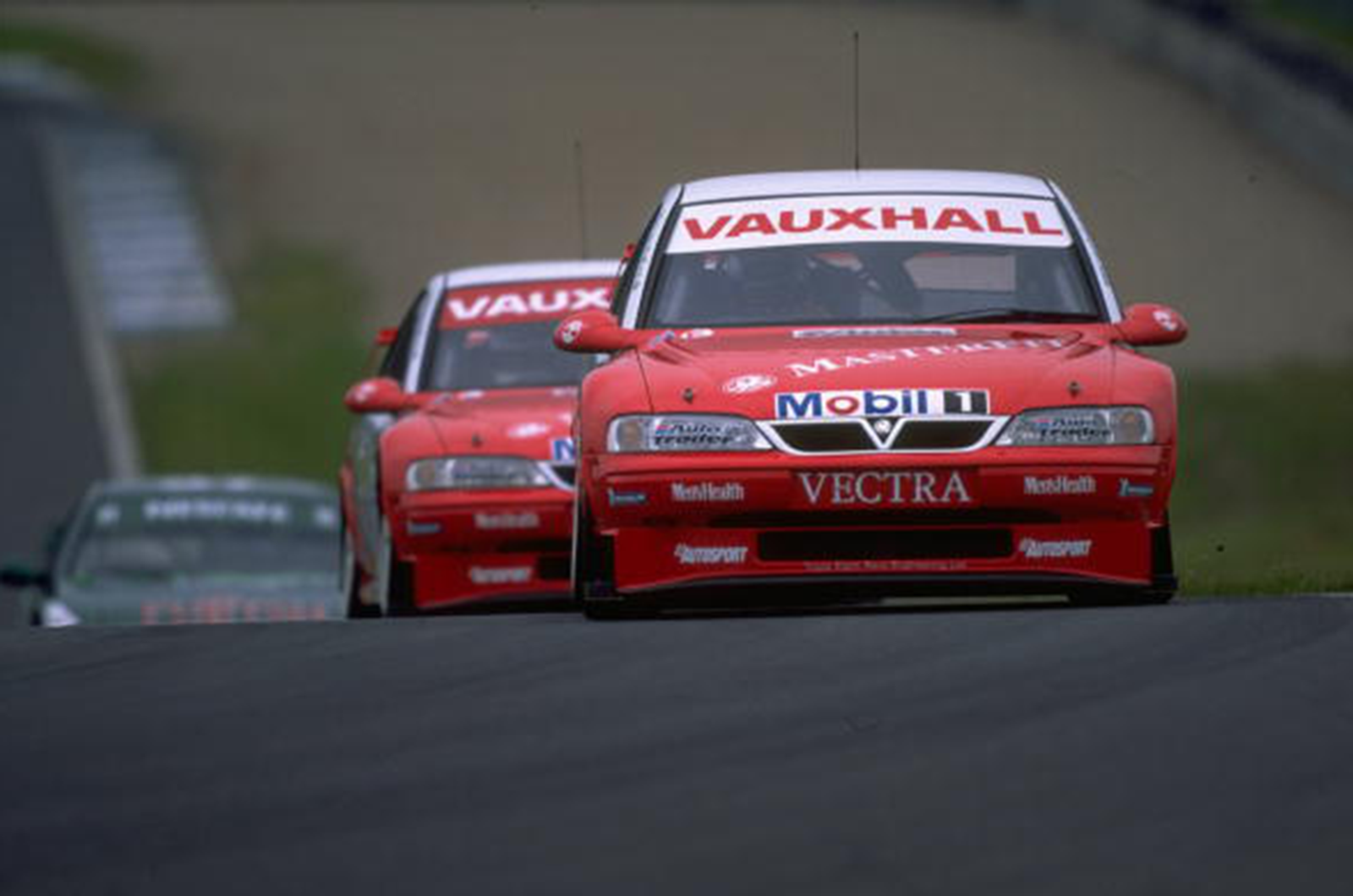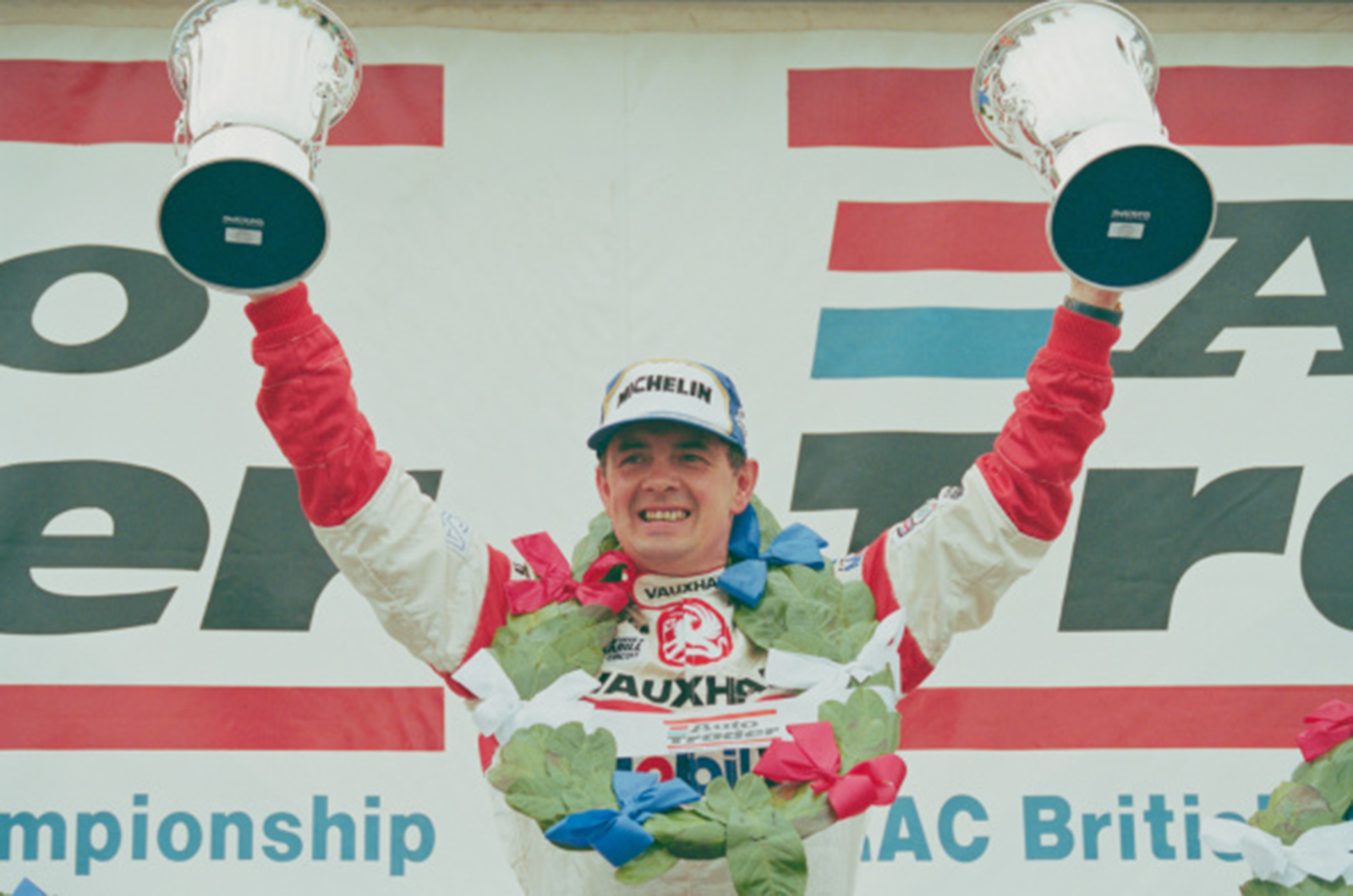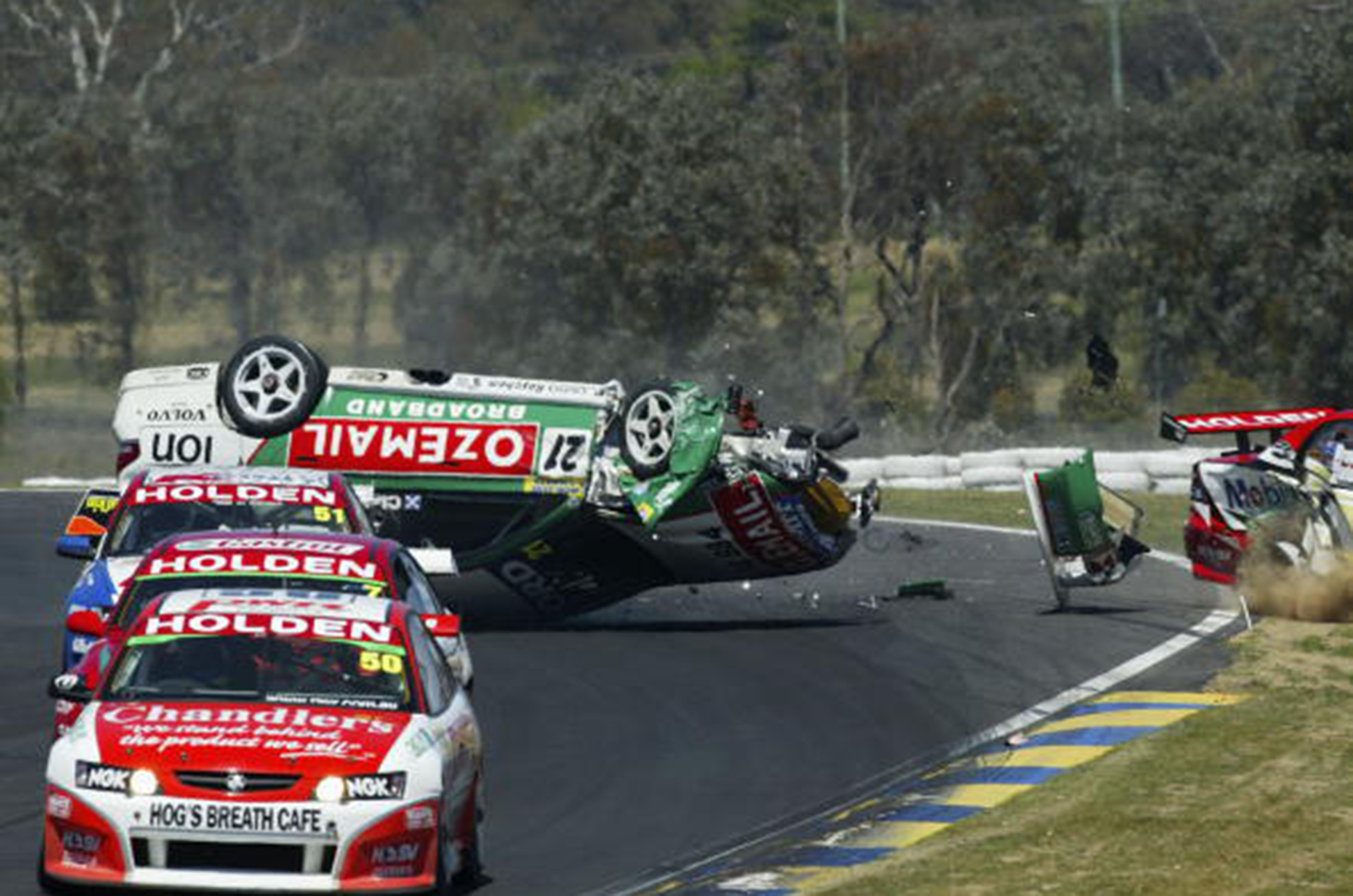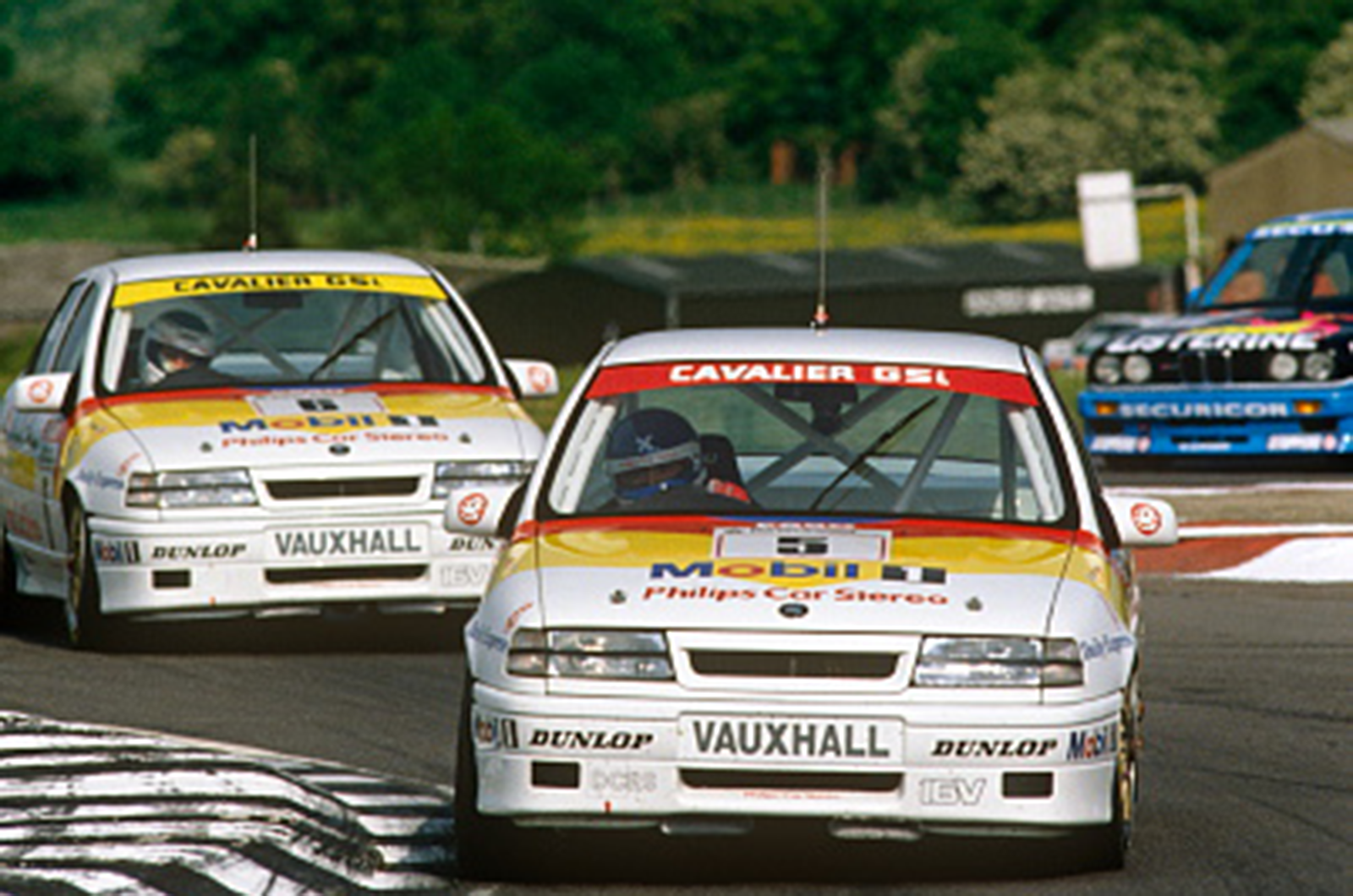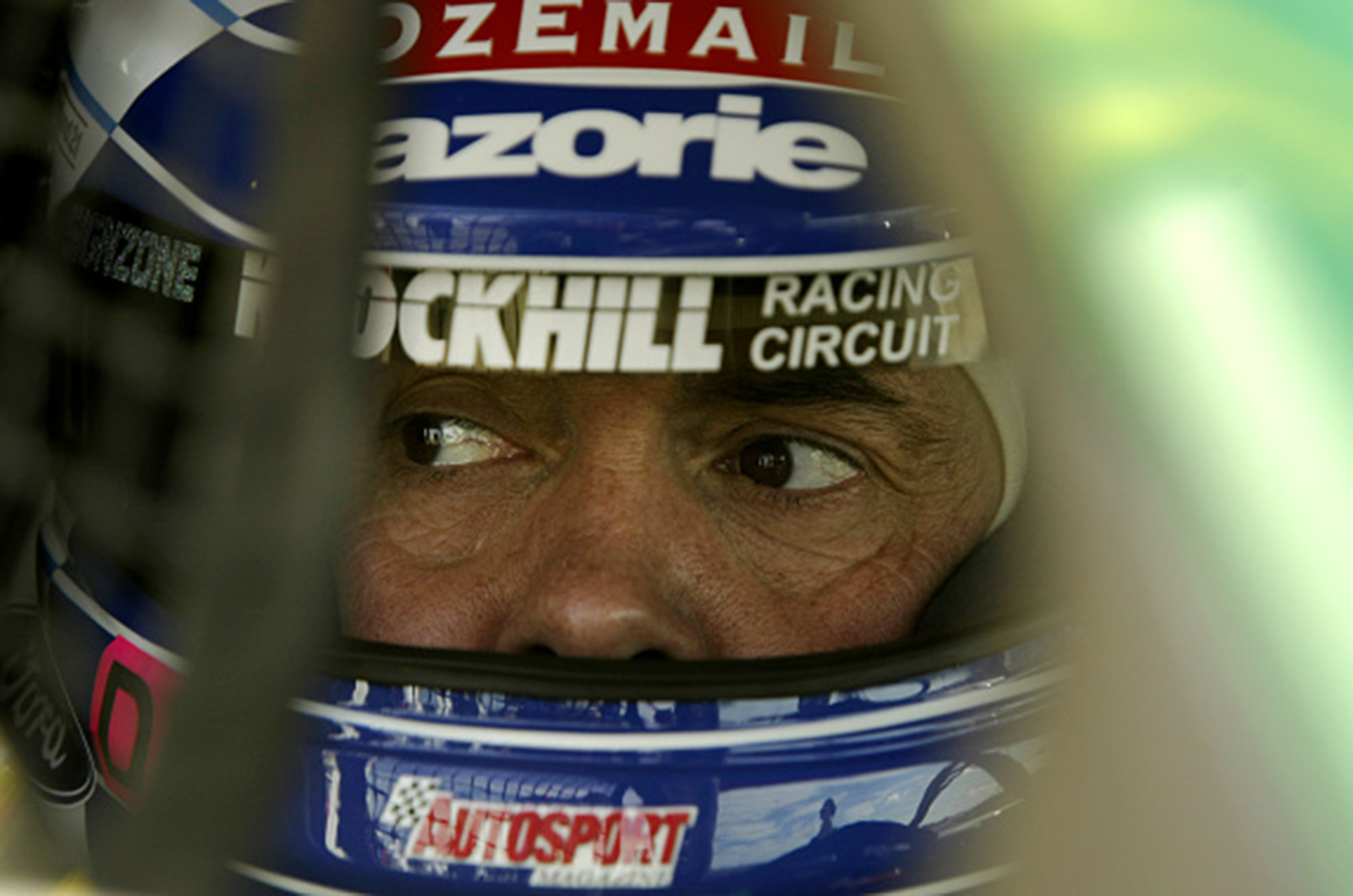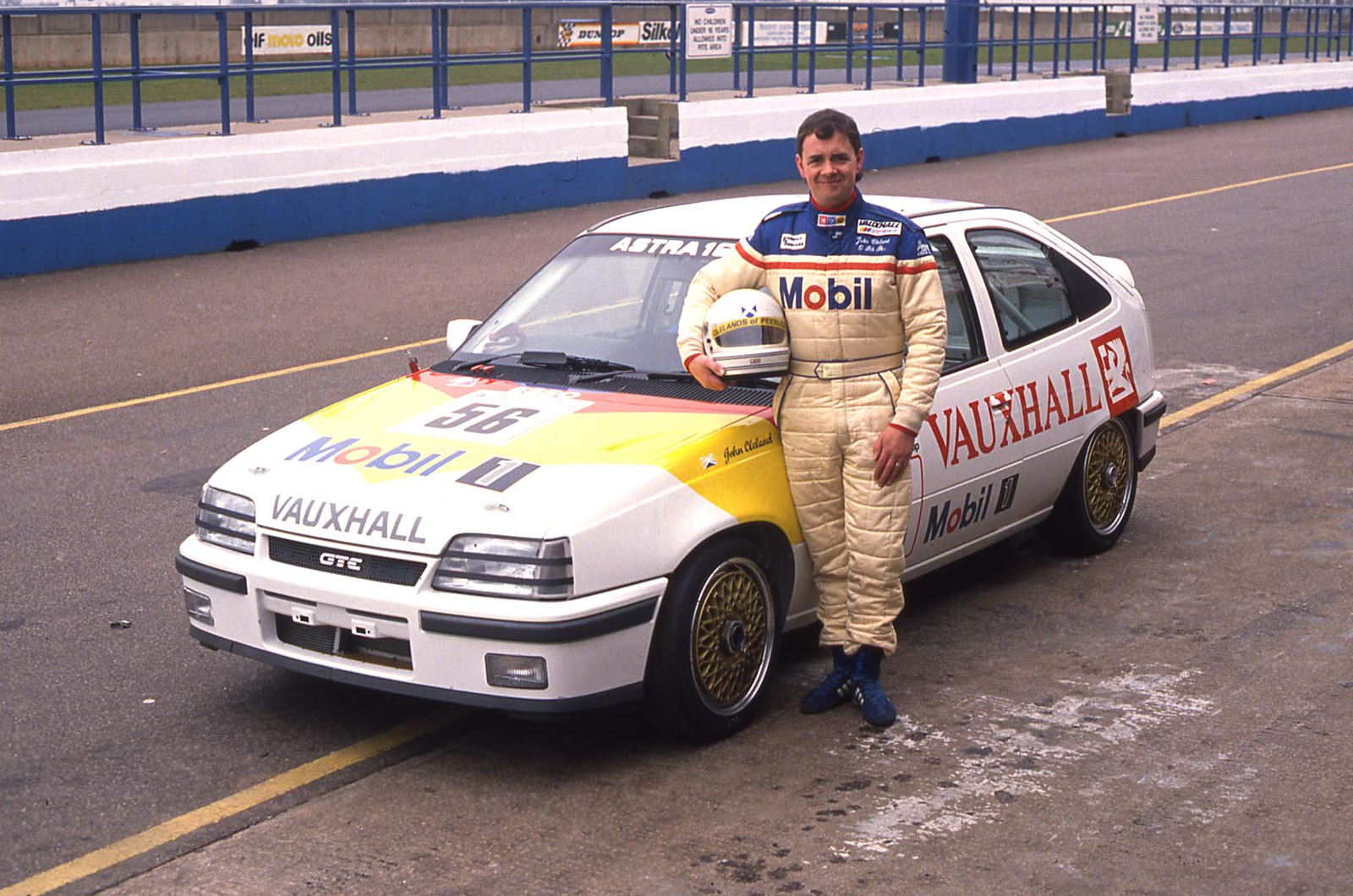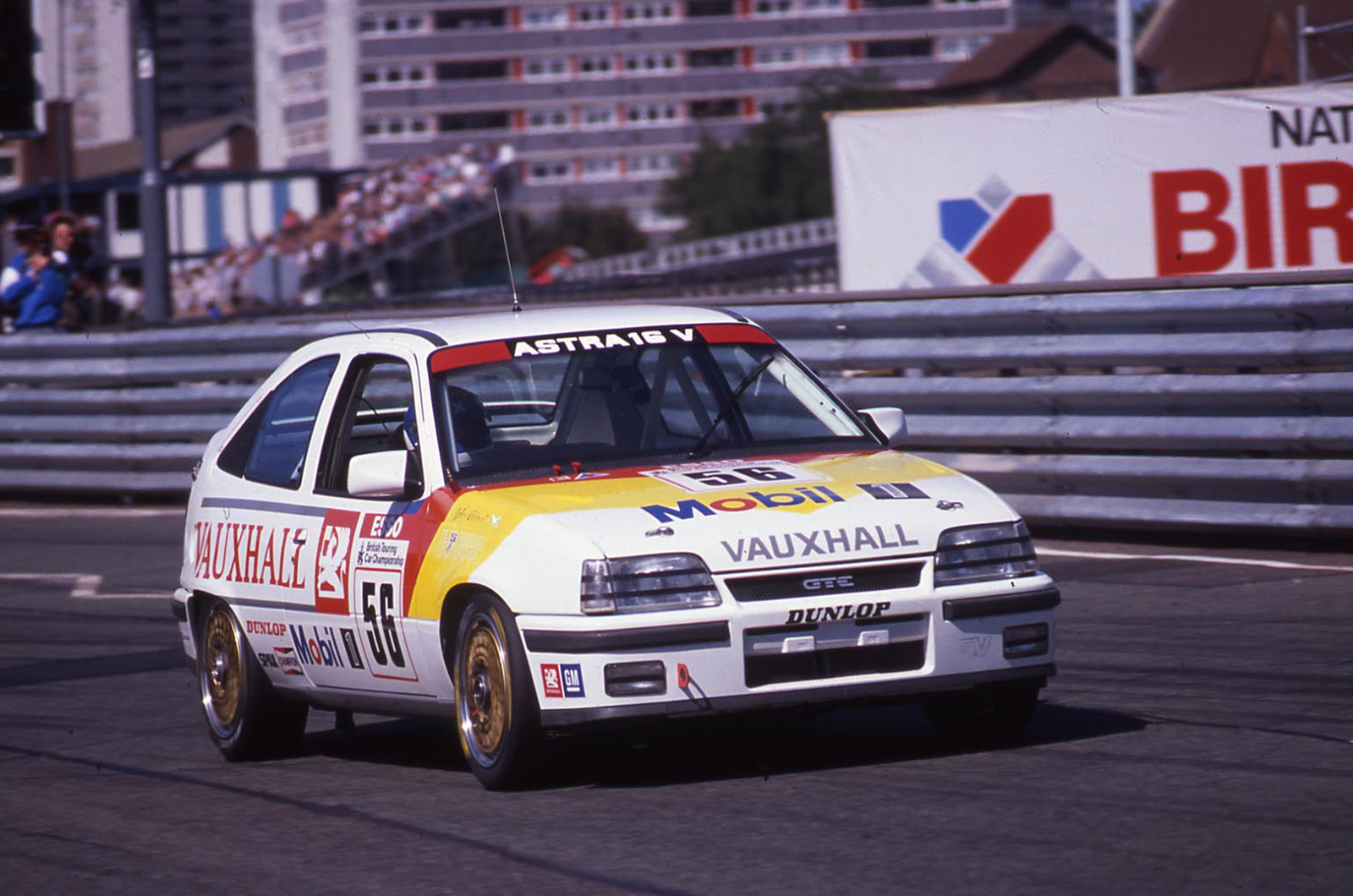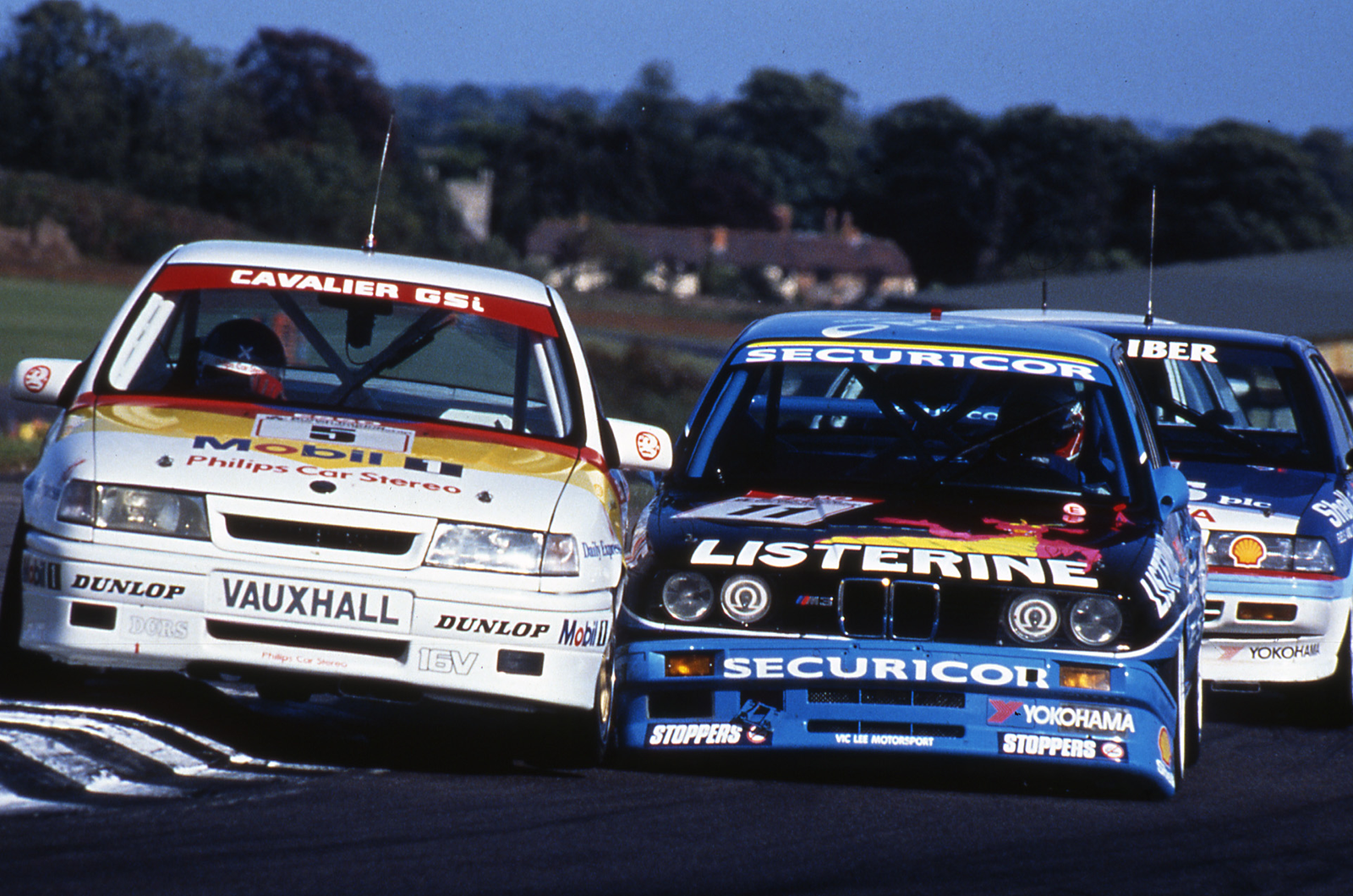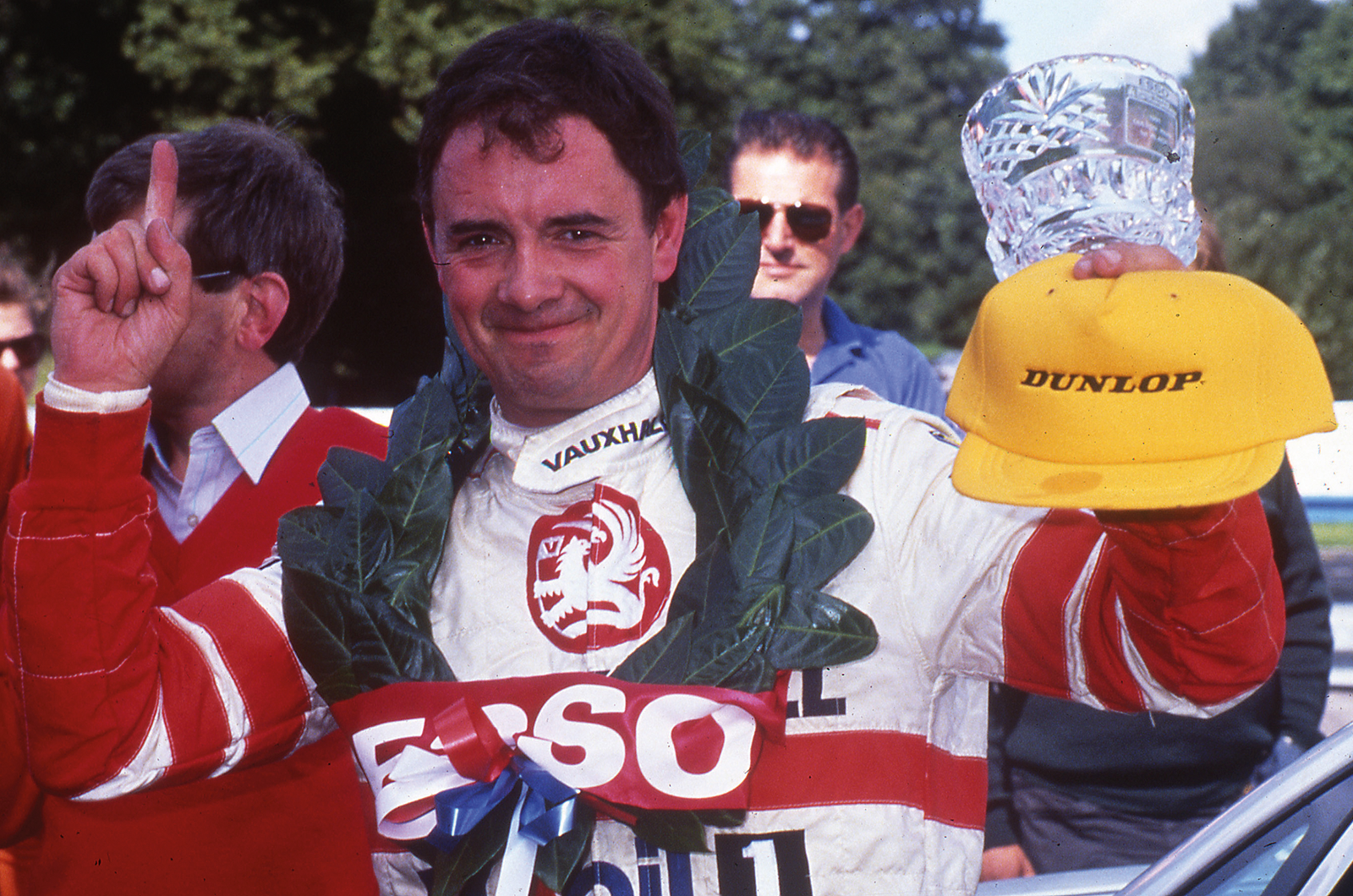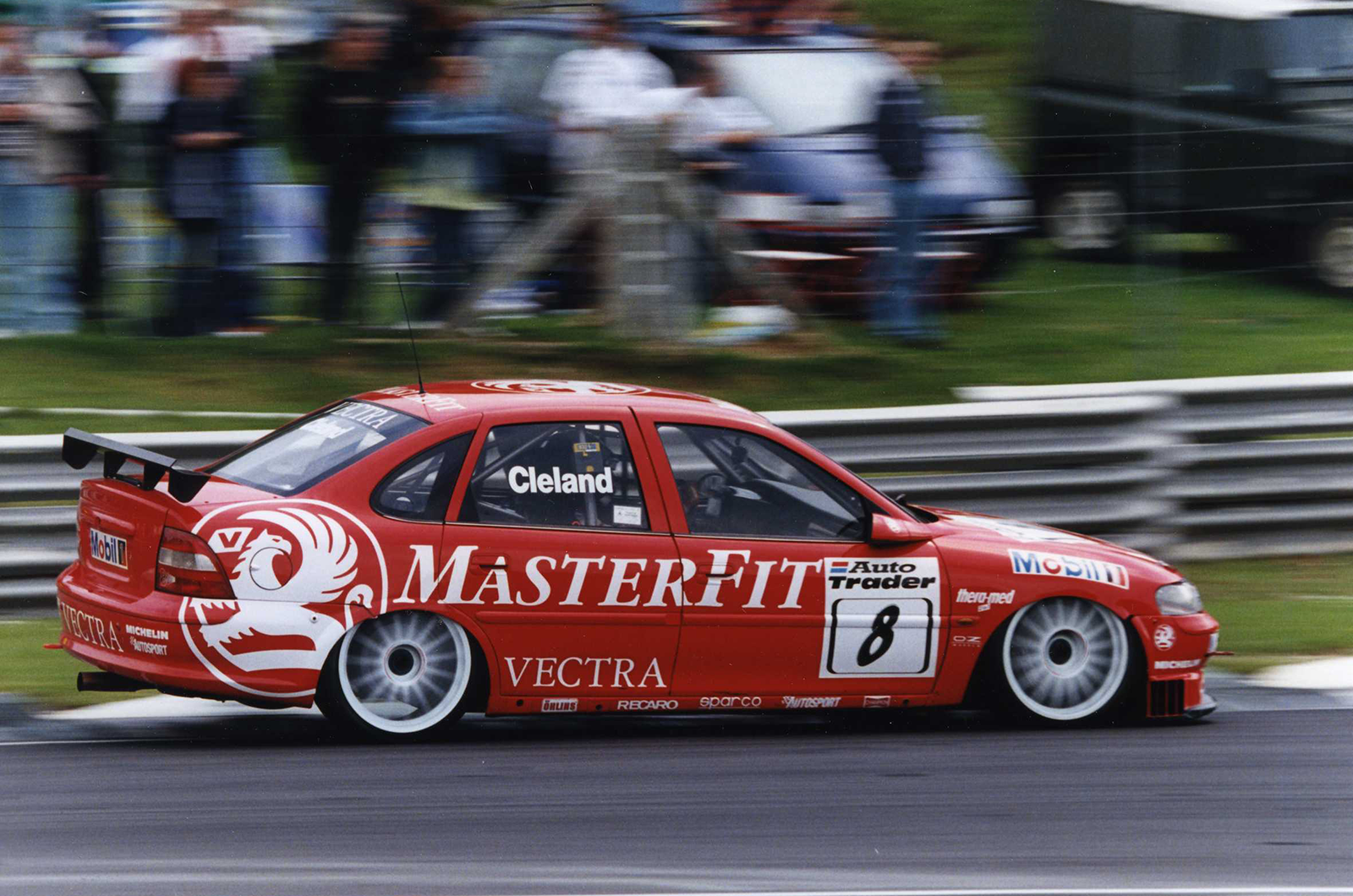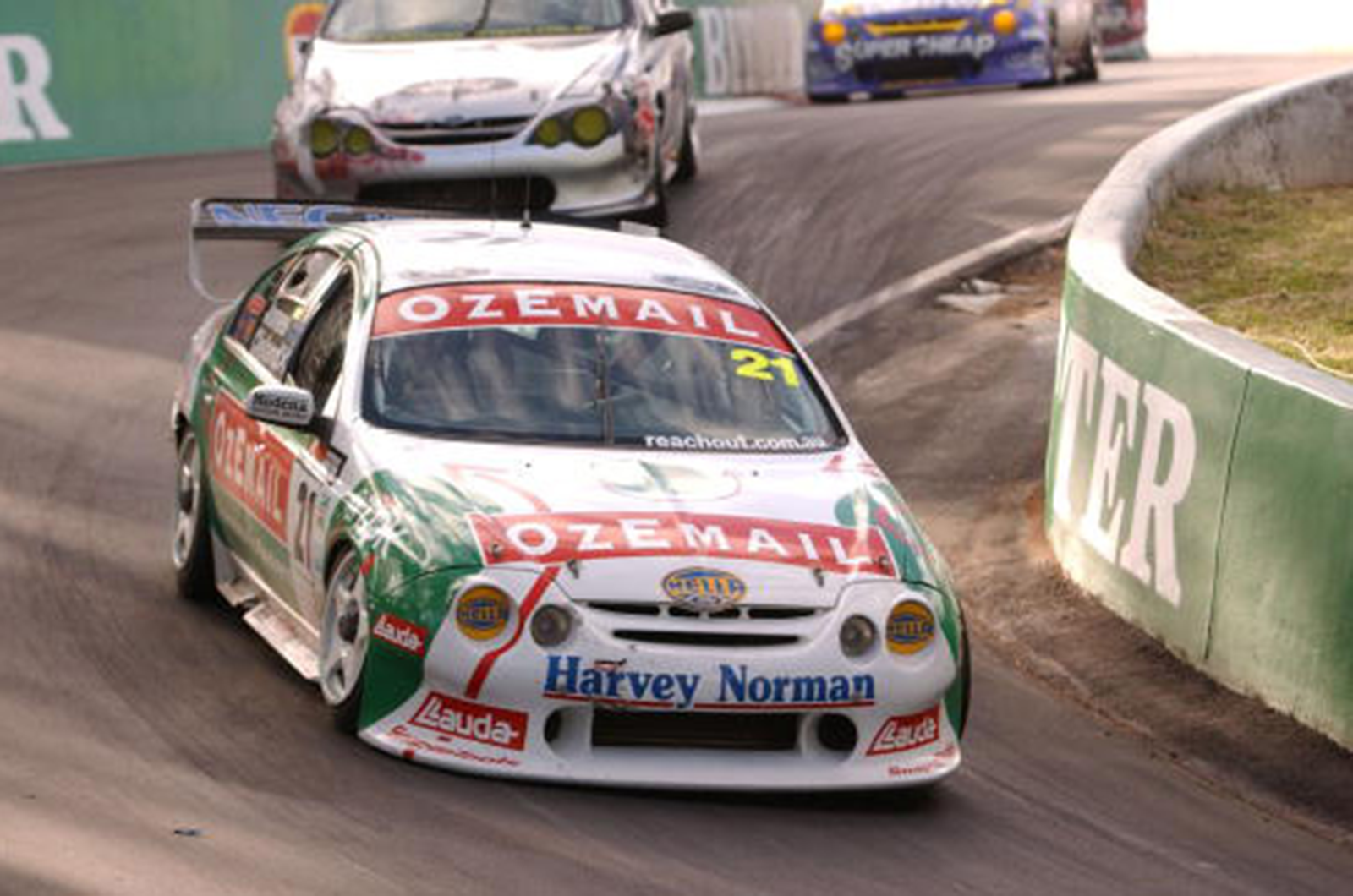“Ray couldn’t understand me. I was the joker who didn’t visit the factory every 20 minutes. I realised that his love was elsewhere and frankly I didn’t give a toss: my contract was with Vauxhall.”
Cleland out-qualified Reid and was leading when the race was red-flagged. His restart lasted less than a lap due to a wayward Gabriele Tarquini.
Cleland was near unbeatable around Donington Park, such as here in 1995, and it was the scene of seven of his 17 outright BTCC race victories
The Cavalier, entering its sixth and final season, was by now surrounded by newer saloons deemed more suitable to competitive adaptation.
The advent of wings and splitters, however, breathed new aero into it – and persuaded Cleland and Mallock to meet each other halfway for ’95.
“We tested wing packages at Silverstone, including the one the wind tunnel said was the best,” says Cleland. “Well, it wasn’t.
“The team was worried because whichever we chose was going to be homologated and used around the world. I just told them to look at the stopwatch.
“We went to a BTCC test at Brands Hatch and everything was fine except that no lap times were showing on my dash. My engineer said, ‘You won’t believe them.’ We were fastest.
“I told them to wash, polish, put the car in the truck and bring it to the first race.”
Cleland’s business may have suffered in ’95, but his fortunes on track did not
“I then went to Ray and told him that I would employ a manager to run my business.
“I also guaranteed him the championship – and asked for Phil Barker as my engineer; I didn’t want Ray engineering me.”
The prescient Cleland took the opening round at his beloved Donington and a sequence of four mid-season wins put him in the box seat.
“The British Grand Prix support race was key,” he says. “I had a coming-together at the first corner that took a slice out of a wheel – but the tyre held its pressure. It held it for another 10 years… and it’s still in my garage!
“When I saw what had happened I thought, ‘We can do this.’ I reckoned the car more than capable, and that all I had to be was consistent.
“My business suffered but I won the title. My relationship with Mallock, however, remained cool.”
The Vectra years were less kind to Vauxhall and Cleland, starting in 1996 and combining for just two wins in four years
Interminable difficulties with the replacement Vectra didn’t help – “Its back end wasn’t ‘connected’. A horror!” – and Cleland would not win again until 1998, by which time the Vectra had been assumed by the Triple Eight team.
His other victory at Donington that season would be achieved after a monumental struggle against Nigel Mansell’s Ford Mondeo in the wet.
Super Touring had reached its apogee. Budgets were becoming unsustainable and, with their increasingly expensive and efficient cars becoming increasingly less spectacular, manufacturers were beginning to drift away.
“There were several reasons behind my decision to ‘retire’ at the end of ’99,” says Cleland. “Triple Eight had a plan that maybe didn’t include me; I had no problem with that.
“But my father wasn’t well – he passed away in 2000 – and was no longer able to look after the business. I wanted to race GTs or something like that; competitive, but not quite at the same level.”
Down Under in Supercars at Bathurst
“I got out at the right time because the BTCC was not very healthy for the following few years.”
It had lost its talisman, too; its public face and voice: “You have no idea how often Vauxhall would call on Monday morning to tell me, ‘You’ve got to be careful what you say.’
“Despite what it might have sounded like I always thought before I opened my mouth and generally it was said for effect, often with tongue in cheek.
“Vauxhall got its money’s worth. But equally I had realised that if I did and said the right thing in and out of the car, I could extend my career longer than I’d anticipated.”
He hadn’t yet ‘retired’, of course, and in 2001 finished runner-up in Australia’s Bathurst 1000 as co-driver to Brad Jones. In a Ford. Whoa!
I am going to have to stop right there.
Images: Getty/Vauxhall/Newspress
READ MORE
Mazda at Le Mans: 30 years on
19 undervalued classics from the 1990s
Inside Vauxhall’s ideas factory
